Fall Weiss in Těšín area
On September 1, 1939, a small but industrially important part of Czechoslovakia from Bohumín to Jablunkov on the left bank of the Olza River, which was occupied by Poland and became part of it, did not witness fierce fighting on September 1, 1939. Despite its economic importance, the Poles did not intend to defend it steadily, but preparations for World War II and the course of its first day were recorded in municipal chronicles, Polish historiography, as well as in German war documents.
On September 30, 1938, at 11:45 pm, the Polish Ambassador in Prague handed over an ultimatum to the Czechoslovak Minister of Foreign Affairs, Kamil Kroft, requesting an expedited extradition within 24 hours of the southwestern part of Těšín Silesia. At the meeting of the Czechoslovak government on October 1, this ultimatum was adopted, and from October 2 to 11, the territory designated by the Polish-Czechoslovak Delimitation Commission was occupied by units created on September 21 by Brigadier General Władysław Bortnowski's Independent Operational Group "Silesia" . At that time, no one knew that in less than a year, the German Wehrmacht would roll over this area as part of Operation " Fall Weiss ".
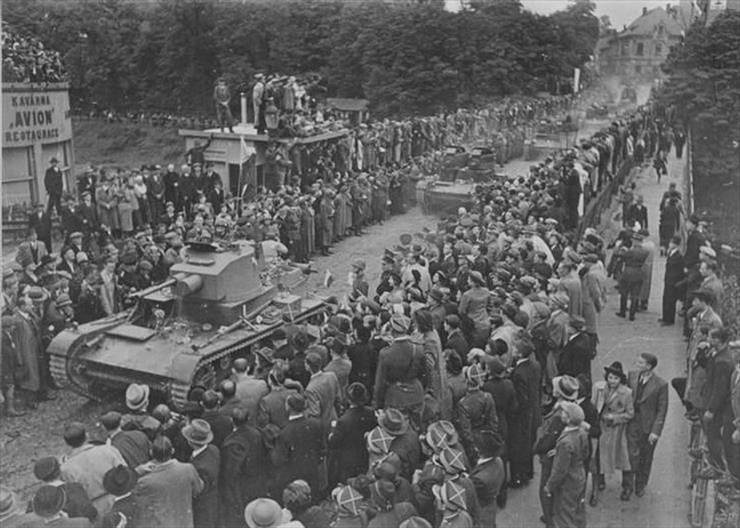
Polish 7TP tanks enter Český Těšín. Oct 2, 1938
It will
Seen from Poland, this area was beyond the border river Olza, or for Poles Zaolziem, which can be translated as Zaolží. The name of the river Olše was MS. authorities introduced only in 1961 without any consultation with the professional public, but even today's generation of indigenous people, regardless of nationality, uses the name Olza. By annexing the newly acquired territory of the Fryštát, České Těšín and small parts of the Frýdek-Místek district to the Silesian Voivodeship, Poland gained over 800 square kilometers with 277,399 Czechoslovak citizens, 35% of whom declared Polish nationality. To this it is necessary to add 16 hard coal mines, 4 coke plants, a smelter in Třinec, industrial and metalworking enterprises in Bohumín, Fryštát and other production plants, or the strategically important Jablunkov tunnel. Production of pig iron in Poland increased by 67%, steel by 38%, coke by 55%, coal mining by 20%. However, the situation of the people living there has changed significantly. Only Polish became the official language, even services were held only in Polish, Czech schools and all Czech social organizations were abolished. This also applied to Polish associations, such as the tourist " Beskid Śląski " ( Silesian Beskydy ) or Macierz Szkolna ( School Matrix ), whose property fell to the Polish state. While the Poles living in Zaolží were enthusiastic about the change, only a feeling of bitterness remained for Czech citizens, as evidenced by entries in the Czech-language chronicles of municipalities annexed to Poland, which were not kept from October 1938 until the end of the war, but some municipalities or towns decided in years. 1945-1948 for retrospective recording of important events from the period of Polish occupation and German occupation. In the municipal chronicle of the town of Třinec , these records were made in 1947 and quite faithfully, albeit briefly, describe the situation at the time. The chronicler of the village Hnojník describes this period: “ Life during the Polish occupation developed mainly in an effort to consolidate the Polish administration - granting and granting Polish citizenship, conscription to the Polish army, and also to combat any signs of Czechness. After the occupation of the rest of the territory of Czechoslovakia 15.In March 1939, the German army's rapid antagonism to the Czechs quickly subsided. ( … ) After occupying part of the Těšín region, the Czechs looked at the Poles as hostile as helpers and minions of the Germans. They prophesied the fourth division of Poland. The Poles rejoiced in the incarnation of Cieszyn ( they called Zaolzie ) to Poland and considered this state to be permanent and unchanging. "More than 30,000 Czechs have left or been forcibly displaced and replaced by almost 20,000 Poles forced to leave their homeland in the 1920s. The Germans, who accounted for about 8% of the local population, were spared this fate in March of what happened to the Poles in a few months.
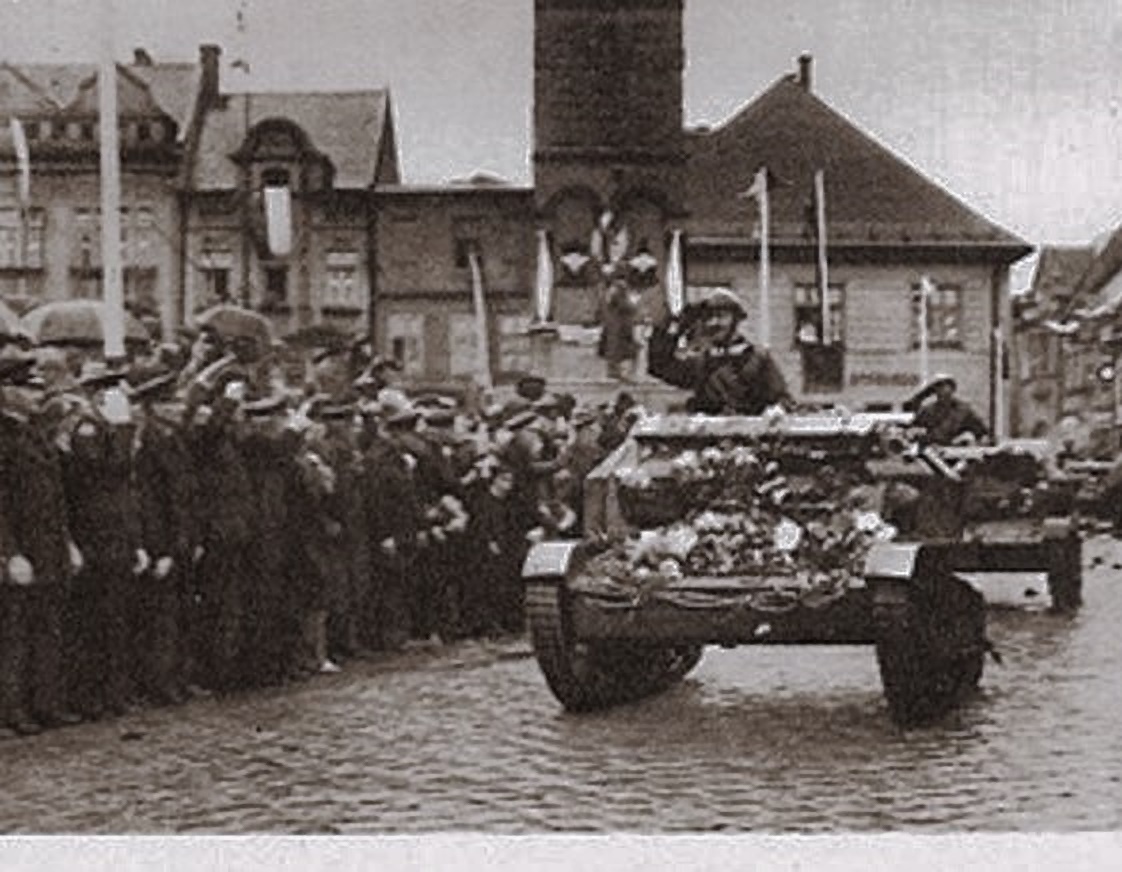
Polish TK-3 tanks enter the square in Fryštát. October 1938
In the defense system of Poland
The occupied territory of the Těšín region was, of course, immediately integrated into the new owner's security and defense system. New gendarmerie stations were established, and in Bohumín , Těrlicko , Jablunkov , Komorní Lhotka and Orlová , the Border Guard Commissariat ( Straży Granicznej ) was established with numerous services stationed along the new border. For example, in Dobratice there was a station with four gendarmes and in nearby Bukovice there was a service station SG " Bukowice " with eleven police officers. The Polish Border Guard was similar to the Czechoslovak Financial Guard, which means that in peacetime it was subordinated to the Ministry of Finance. Among other things, its members were to prevent illegal border crossings and smuggling of goods of various kinds, to carry out guard, control and search services and to cooperate with the military authorities in the defense of the state. In the event of partial or full mobilization, the Border Guard became part of the Polish Armed Forces. However, there are documented cases where Polish financiers helped Czechoslovak citizens, especially soldiers fleeing the Protectorate.
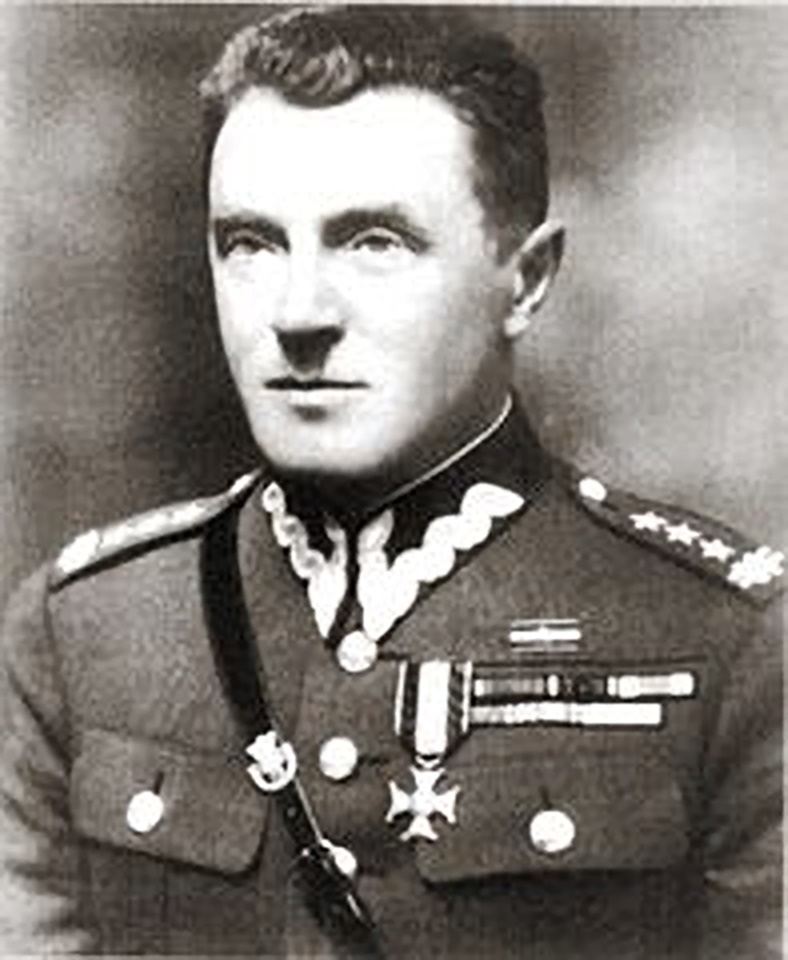
The commander of the 21st Mountain Infantry Division, Brigadier General Józef Kustroń, still as a colonel. He was appointed general in March 1939.
After the departure of the units of the Independent Operational Group gen. Bortnowski was taken over by the 21st Mountain Infantry Division from Bielsko . In this context, its commander, Brigadier General Józef Kustroń, already in December 1938 proposed some changes in the deployment of his troops and the formation of new battalions. He could not use more than 230 acquired reinforced concrete light objects of the Czechoslovak fortifications - řopíky, because they had the shooting range turned in the wrong direction and were completely unarmed. All of them were inventoried and some were subjected to shooting tests. Their walls are said to have pierced projectiles from Polish Bofors wz anti-tank cannons. 36 caliber 37 mm. Some of them were therefore even destroyed. In the chronicle of the town of Karviná written after the war, there is a retrospective record of it: “ The new rulers of the country decided to destroy all the fortifications along the Olza River in the summer of 1939.( … ) Workers, under military supervision during the destruction of shelters, the workers knew best the durability and solidity of these concrete structures. They worked at a set pace throughout the day - from the earliest morning to late in the evening. ( … ) The roaring wounds of exploding dynamite charges echoed throughout the region and throughout the day from the beginning of June exactly until August 15. On that day, the last " Abyssinians " disappeared near the Sovinec-Doubrava and equally old town cadastral borders. “Only on the border with Germany near Bohumín, the Polish army took over 4 infantry cabins ( these were MO-S 2 to MO-S 5 ) and 7 řopíky ( they were four buildings of construction section XVI (Nový Bohumín (Šunychl)) and three inserted ROP building section II Hlučín ), which could be used and for their occupation gen. Kustroń proposed to build a new special fortress battalion. However, his demands were not fully heeded. Eventually, III was relocated to Zaolží. battalion of the 3rd Regiment of Podhalan Shooters to Bohumín and III. section of the 21st Light Artillery Regiment in Český Těšín renamed Western Cieszyn ( Cieszyn Zachodni ).
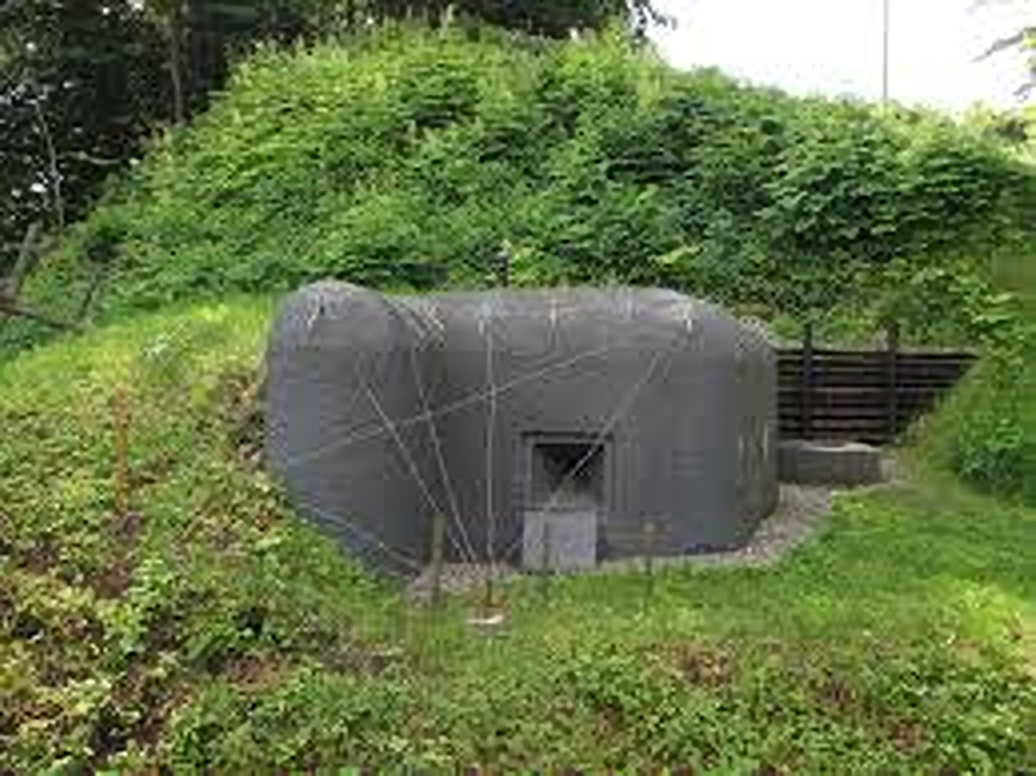
One of the forts taken over by Poles in the Těšín region
Shortly after the occupation of Cieszyn, refugees from the early 1920s began to return en masse from Poland to Zaolží, among them many men capable of military service. From 10 January to 23 March 1939, a new National Defense Battalion pravidel Cieszyn II ’with the companies, Cieszyn ’ ( Cieszyn ), „Trzyniec’ ( Třinec ) and " Jabłonków " ( Jablunkov ), which was included in the Silesian-Těšín Semi-Brigade of the National Defense. These territorial battalions were numerically weaker than the infantry battalions of the regular army, less armed, and were not to be used in frontline battles. However, the last modification of the mobilization plan " W " from May 1939 determined that the Silesian-Teschen semi-brigade will be transformed into the 202nd Reserve Infantry Regiment for the 21st Mountain Infantry Division and Battalion " Cieszyn II " under the command of Infantry Major Włodzimierz Kuczma will be his III. battalion.
Preparations for war
The deteriorating strategic situation of Poland after the German occupation of the rest of Bohemia and Moravia and the declaration of Slovakia's independence under the " patronage " of the Nazi Third Reich forced the Polish General Staff to update the preliminary plan for the 1936 war with Germany, the so-called " West " Operational Plan. March 23 were formed frontline operational bundles and between the Army "Cracow" Division General Antoni Szylling the Task Force "Bielsko" (Grupa operacyjny "Bielsko") under the command of Brigadier General Mieczyslaw Boruta-Spiechowicza , in which the group 21st Mountain Infantry Division prepared main defense line Dziedzice from the village to the north, through Bílsko (Bielsk), after the mountain massif Klimčok - Ram mountain in the south. So lying on its forefield, the Těšín region should not be defended.In this area, the advanced units were to find out the main directions of the German advance and make it more difficult to access the main defensive line.
Each Border Guard commissioner received a reinforced platoon after the announcement of a partial alarm mobilization in August 1939. A total of 53 mobilized soldiers under the command of a reserve officer consisted of his escort and three reinforced teams. In each team, there was a miners patrol of four engineers, who had at their disposal 100 kg of explosives intended for the destruction of important communication objects in the directions of the enemy units. It was these platoon, armed with one hand-held machine gun wz. 28 , Mauser wz. 98 and hand grenades were to slow down the first onslaught of attackers.
Battalion Lt. Col. After the destruction of the bridges on the Oder and the railway station, Wacław Iwaszkiewicz was to retreat from Bohumín without a fight, in the area of the nearby village of Jastrzębie to fight for the detainee, then disengage from the fight and take ready positions on the main defensive line. The commander of the 4th Regiment of Podhalan Riflemen , stationed in Těšín, Lieutenant Colonel Bronisław Warzybok, appointed Major Perl's first battalion with advanced patrols in Mistřovice and Horní Žukov to protect the town from the direction of Frýdek . From the right bank of the Olza, they were to be supported by four howitzers vz. 14/19 from the 7th Battery of the 21st Light Artillery Regiment and two cannons wz. 02/26 regimental platoon of accompanying cannons . Most of the 202nd Reserve Infantry Regiment was concentrated on the main defensive line near Skočov, but the former Jablunkov company of the National Defense, now the 7th Company III. battalion, had the task of holding the Germans in Trinec. On 15 August the district office in Těšín ordered the closure of border traffic, on 23 August a state of emergency was declared, on 29 August the border between Poland and the Czech Protectorate was closed and a day later the Polish authorities ordered the immediate eviction of families of officials and teachers. Under pressure from the Western Allies, the general mobilization was not begun until August 31. For its undisturbed course, according to Polish sources, the 5th Company of the 202nd Regiment was transferred to Karviná and the Divisional 55th Cycling Company was transferred to Fryštát, which, however, is not recorded in the chronicles of both cities.
On the other side of the border, war preparations began in June, which is recorded in great detail in a chronicle located almost at the border of the village of Dobrá : “ At the beginning of June, military cars began to bind material for fortification work. The area near the station was filled with this material. In July, wire barriers began to be laid, which passed through the eagle's playground, the garden of the merchant Ferd. Špoka to Vrchy towards the village of Pazderne, to the south over the state road, which was modified for strong iron obstacles, through the garden of Fryščák Josef, the land of Dominika Březina through the hat towards the river Morávka, through this to Skalická hůrka and Krásná. Behind these obstacles on the lands of citizens were built various shelters and machine gun nests. The work was initially carried out by a Czech labor camp. On July 15, a German military unit of several hundred men was housed in Dobrá and completed the fortification work in early August. ( … ) The troops of the division were mostly from Austria. “Similar records in the chronicles of several neighboring villages indicate that some Austrians spoke Czech. And just formed from the former Austrian units 44th and 45th.the infantry divisions of the Wehrmacht stood opposite Zaolží. From August 26, their units were concentrated in the area of Frýdek ( 45th Infantry Division ) and southeast of Ostrava ( 44th Infantry Division ), among others in the villages of Dobrá, Palkovice, Kozlovice, Vratimov , Bruzovice, which is also recorded in municipal chronicles.
44th Infantry Division under the command of General Lieutenant Albrecht Schubert carrying the tradition of kuk Infantry Regiment Hoch- und Deutschmeister Nr. 4 was formed on April 1, 1938. Its staff was based in Vienna , but the staff of the 131st Infantry Regiment was located in August 1939 in Mikulov , the 132nd Infantry Regiment in Brno and Jihlava and the 1st Section of the 96th Artillery Regiment in Znojmo . On the first day of the war, the division was to cross the Olga, bypass the north of Cieszyn, and fight its way west and north of Skočov . The Austrian 4th Infantry Division became the 45th Infantry Division of the Wehrmacht, commanded by Generalleutnant Friedrich Materna . In August 1939, its headquarters was located in Linz , staff and two battalions of the 130th Infantry Regiment, as well as III. section of the Artillery Regiment 98 in Cesky Krumlov . After crossing the border, her troops were to occupy Třinec with its ironworks, bypass Těšín from the south, take control of the town and move to the line east of the village of Ogrodzona.
Falstart on the Jablunkov Pass
The third German division from the XVII Army Corps , the Bavarian 7th Infantry Division , was moved to Žilina in Slovakia on 3-11 November. August. The task of its deployed in Čadca 62nd Infantry Regiment was to control the strategic railway tunnel ( and actually two single-track tunnels ) under the Jablunkov Pass, which Poland acquired together with Zaolží. Tunnels with an average length of 607 m connected Silesia with Slovakia and obtaining them in an undisturbed state was a priority for the Germans. On August 25, at 3:02 p.m., Hitler set the beginning of Operation " Fall Weiss " ( White Plan - Attack on Poland ) on August 26 at 4:30 a.m., but in connection with the conclusion of the Polish-British Alliance on August 25, the original date was canceled, which the German first-line units learned only in the evening at 20:30. However, a group of more than 30 diversors, including from the Jablunkov region, led by Lieutenant Hans Albrecht Herzner, was on their way to their goal. The vast majority of local Germans or so-called Schlonzaks were not satisfied with the connection to Poland. This dissatisfaction was used by the German military intelligence Abwehr and formed a diverse combat organization in the Těšín region - Kampf Organization. The group of fighters in Jablunkov was led by teacher Heinrich Knoppek and the group in Mosty by Anton Szotkowski. In June 1939, the Abwehr gathered 30 selected divers in Čadca, where they underwent thorough retraining. The whole division was then subordinated to Herzner under the name "A-Organization". He was to seize the railway station in Mosty ( today's Mosty u Jablunkova ) and prevent the destruction of tunnels.In mid-August, they were mined by a specially designated platoon of lieutenant in the reserve of Witold Pirszel from the 21st Engineer Battalion. The immediate defense of the tunnel was provided by III. platoon of the 4th Company of the 4th Regiment of Podhalan Shooters, Lieutenant Ignace Lichter, and a reinforced platoon of the Jablunkov Border Guard Commissioner, Lieutenant Ośródki. In 40 pockets carved in the sides of both tunnels, engineers placed 20 tons of explosives. Even before dawn on August 26, Herzner's fighters occupied the railway station in Mosty, detained several passengers but could not find the launcher. The Poles received a telephone order from Těšín not to blow up the tunnels and to take any retaliatory actions until sunrise. Because the divers did not receive support from Slovakia, Herzner, with one wounded and several hostages, broke through the locomotive through the tunnel back to the Slovak side to Čadca and the rest of the fighters retreated to the surrounding mountain hills. On the same day, the commander of the Polish 21st Mountain Infantry Division, General Kustroń , arrived at the scene of the incident, where he met with a representative of the Wehrmacht and accepted the apology of the commander of the 7th Infantry Division, Major General Eugene Otto . His division reportedly had nothing to do with the action and it was the work of only a few irresponsible individuals.
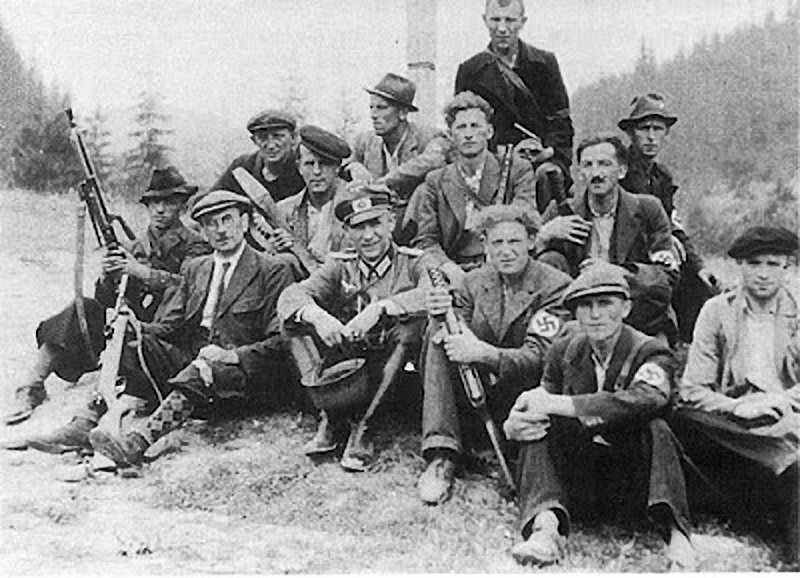
Lieutenant Hans Albrecht Herzner with a group of his fighters before a diversionary operation on the Jablunkov Pass
Ground combat
After this incident, Polish engineers sharpened their attention. When the Germans advanced to the tunnel around half past six in the morning on September 1, Lieutenant Pirszel personally detonated the bombs and his overburden, which was up to 24 m thick, crashed along with the road leader. The Polish defenders began a rapid retreat to Jablunkov, in which the miners' patrols managed to destroy three more bridges and then retreated to the interior of Poland towards the village of Istebna. The German infantry, led by the shortest route by local fighters of German nationality from the Kampf-Organization, took control of Jablunkov without a fight in the morning and headed for them.
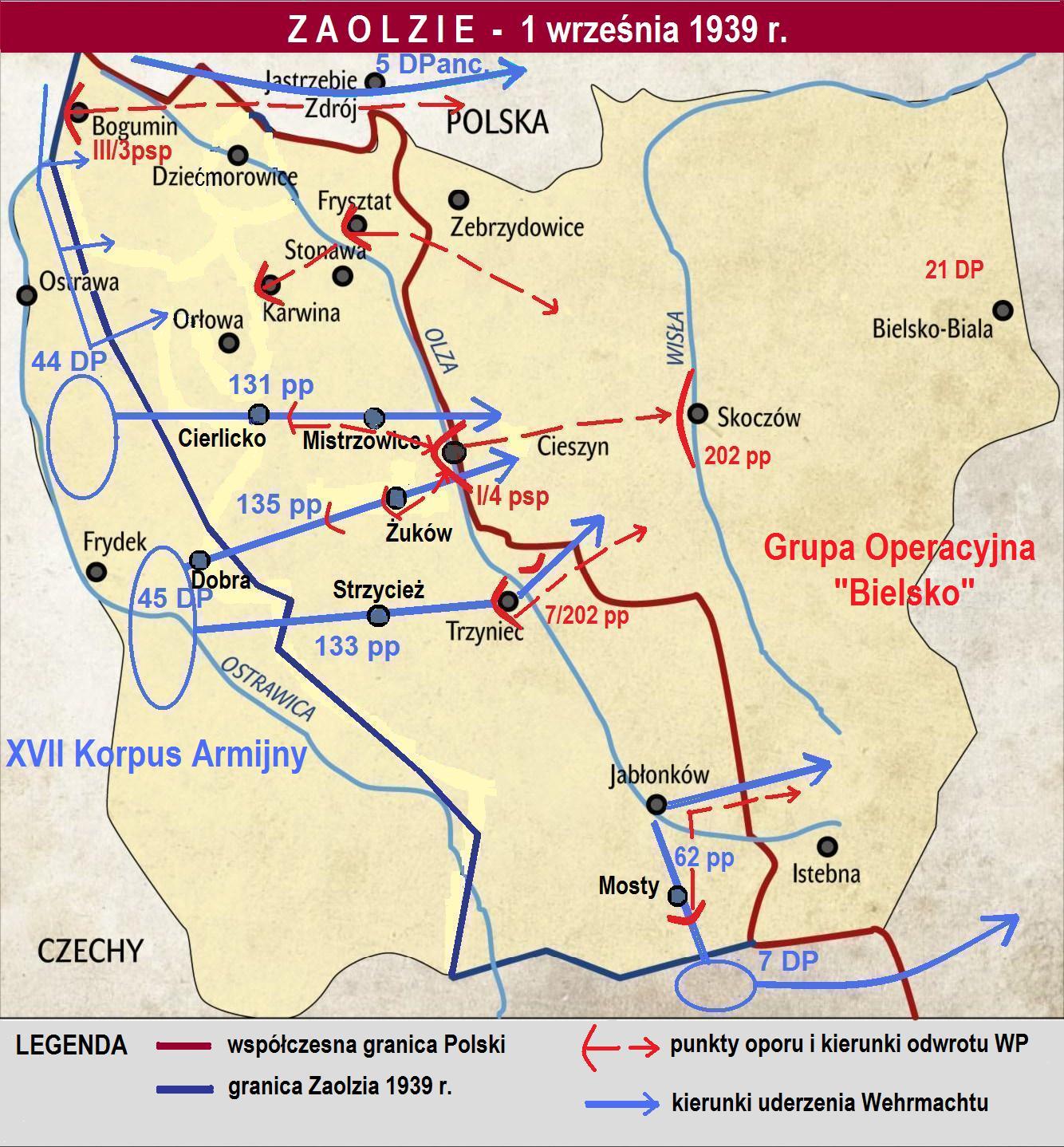
The northernly concentrated regiments of the 45th and 44th Infantry Divisions were ordered to attack at three o'clock in the morning and immediately set out for the border. The divisional reconnaissance units and lateral security units advanced at the head. Their first obstacle was the front guards of the Border Guard, which were declared alert during the night. An unidentified member fell on the slope of the border mountain Prašivá, and the resistance in Dolní Třanovice, where she lost her first prisoners, was broken by the infantry of the 135th Infantry Regiment by eight o'clock in the morning. Probably in this fight, around half past seven, Uffz was very badly wounded. Werner Karl Herrmann from the 2nd Company, who died the next day in Frýdek-Místek Hospital. The regiment fought another battle south of Horní Žukov with the 2nd Company of the 4th Regiment of Podhalan Riflemen Lieutenant Michał Borec, supported by howitzer fire of the 7th Battery of the 21st Light Artillery Regiment, but after a short firefight the Poles retreated to nearby Svibice. At 14:00 the commander of the Polish regiment received an order to withdraw from Těšín, after three o'clock in the afternoon the bridges over the Olza river were blown up and at 18:00 the Těšín units of the 135th regiment entered "to the applause of the citizens". During the first day of the war, the regiment captured 14 members of the Border Guard and 5 Polish soldiers, losing two fallen and three wounded. Civilian casualties were also on its way. At the cemetery in Horní Žukov was 2.September the body of the shot Jan Sikora, a carpenter from Hnojník, was found.
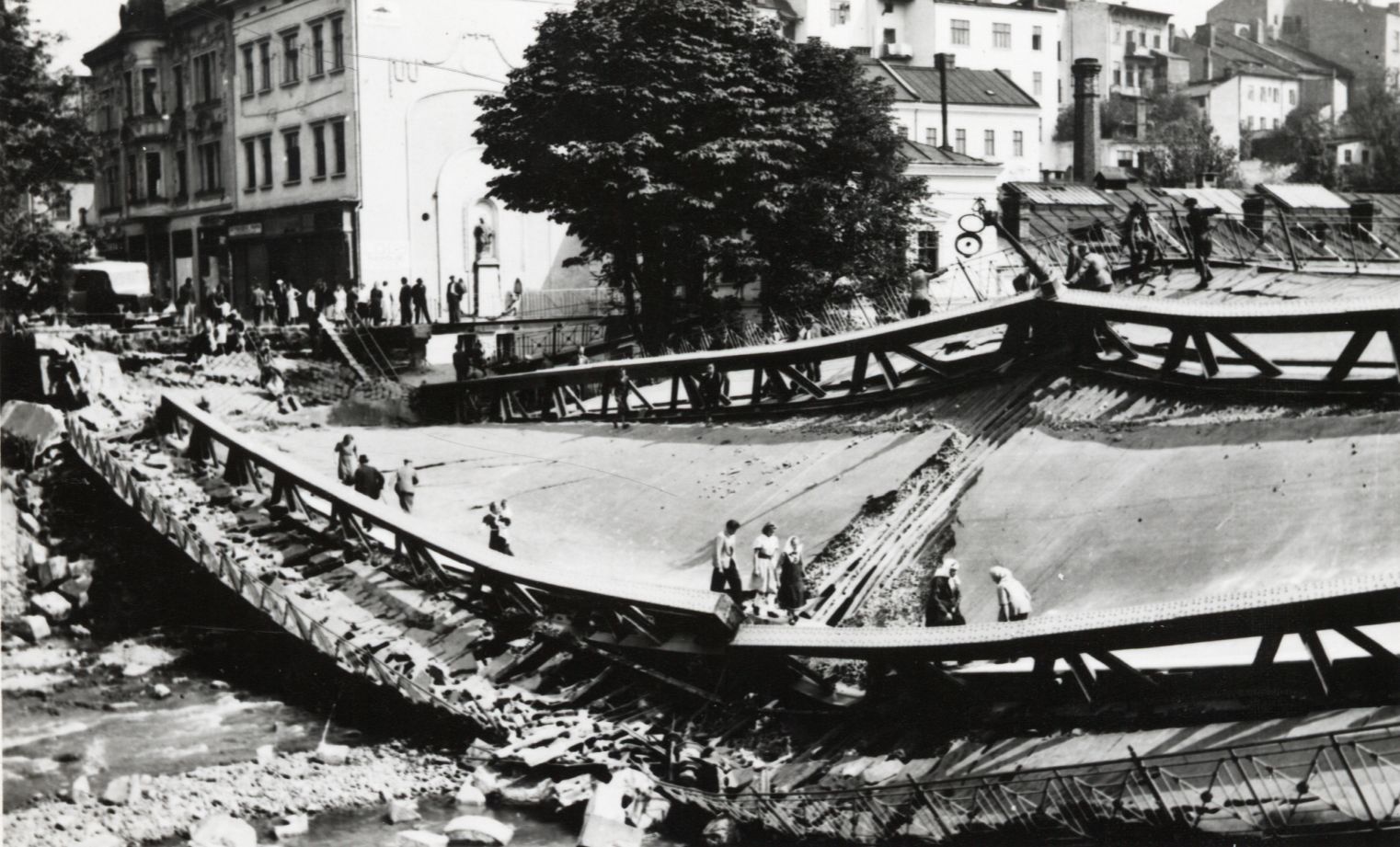
The main bridge on the Olga in Těšín was destroyed by Polish engineers on the afternoon of September 1, 1939.
The first units of the 133rd Infantry Regiment ( 45th Infantry Division ) entered the village of Hnojník at 6 o'clock in the morning. The new bridge over the river Stonávka was only damaged and was not an obstacle in the further progress to Třinec. In Střítež infantry III. the battalion was surprised by the fire of Polish howitzers and there fell the first non-commissioned officer of the regiment, Gefreiter Erich Kranich from the 11th Company. In the contemporary German documentary Gefallene der 45. Division in Polen 1939 und Frankreich 1940 is the entry: „ 1.9.1939 Stritnice in Olsagebiet: Gfr. Erich Kranich - 11./IR 133 - Stritnice Friedhof - Art. Gesch. (Artillery Designs): Bread and Brauch. “The village of Stritnice does not exist and did not exist, but right next to Střítež lies the village of Smilovice, and the combination of its names can give the final result of the registration of the place of his death. The battalions of the regiment headed to Třinec, defended by the 7th Company of the 202nd Reserve Infantry Regiment. In the German report, the events in Třinec are characterized as " heavy street fighting ", in which the battalion of the second-line 130th Infantry Regiment also had to participate. The Třinec Chronicle states about the fighting: “ On September 1, 1939, German occupation troops entered our town in the morning immediately after the retreat of Polish troops. They came from Frýdek via Canada, the center of the town and proceeded further through Horní Lištná towards Bílsko. The advancing German army was shot by civilian citizens in Canada, from the tower of the Catholic church in Třinec and from the windows of the factory houses in Horní Lištná. During the shootout and counter-reaction, two houses were burned down and 9 people were killed. “One of them was a 30-year-old citizen of Vendryně, Jan Błaha, who operated a machine gun located in a local quarry. On the right wing of the Polish defense, the platoon of Lieutenant Leopold Dziadek was closing in Třinec-Koňská road leading from Těšín to Jablunkov. In addition to three machine guns, it also had one anti-tank rifle wz. 35 with ten rounds. According to the testimony of her commander, she fought the first fight at 7:30 with a cavalry patrol and around 10:00 with infantry supported by an armored car, which managed to stop several shots from an anti-tank rifle. Because the rest of the 7th Company was forced to retreat by a bypass from Vendryně, the platoon withdrew north of Horní Lištná, where it repulsed several infantry attacks supported by artillery, and around 17:00 as the last Polish unit retreated from Zaolží. On the first day of the war, the German 45th Infantry Division lost 4 fallen, 6 seriously and 10 lightly wounded.
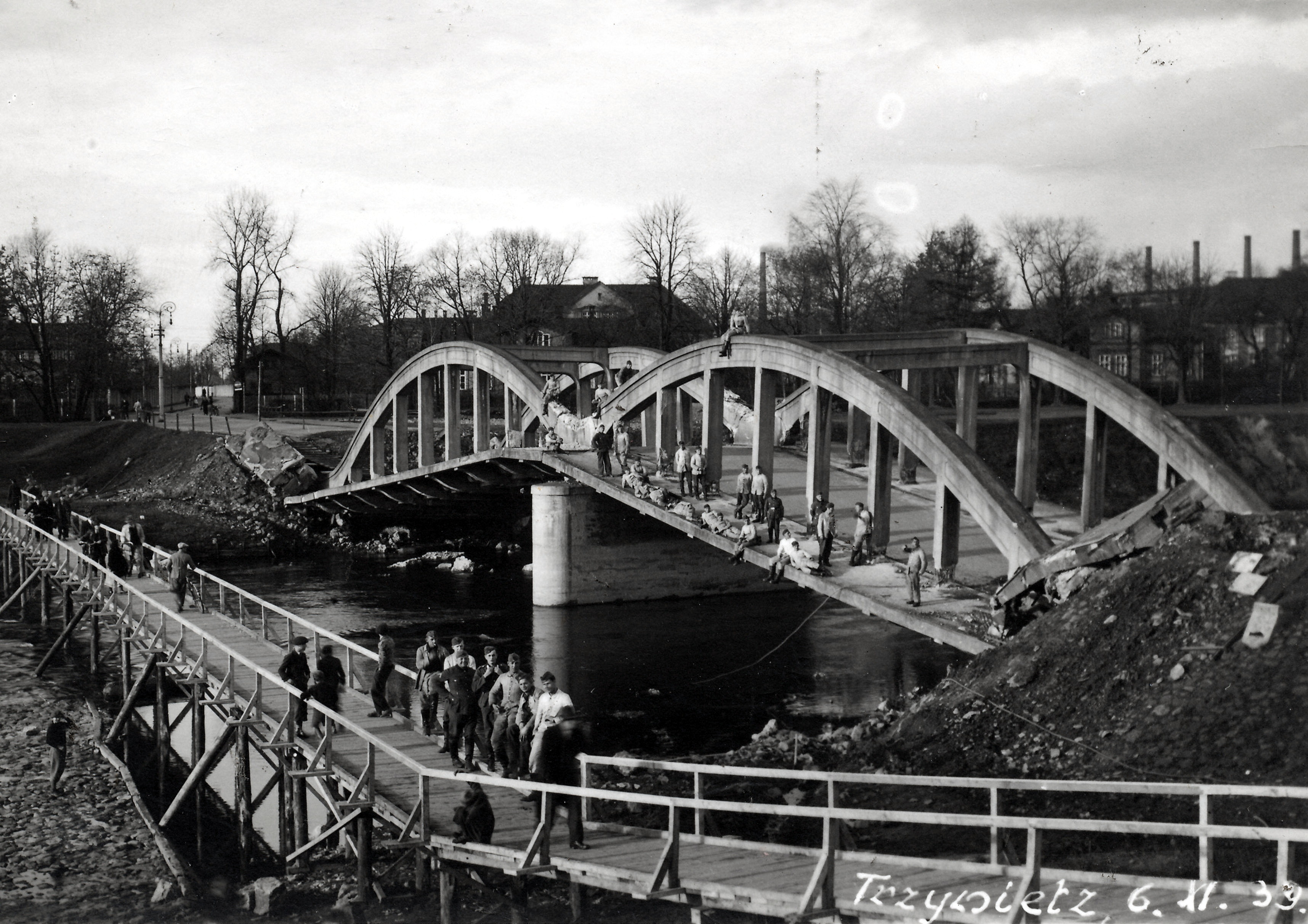
Bridge over the Olga in Třinec. Its bridgehead was destroyed by Polish miners on September 1, and the picture was taken on September 6, 1939.
The neighboring 44th Infantry Division deployed two infantry regiments to advance. Her 131st Regiment arrived at Olga quickly and without resistance after a brief confrontation with the Border Guard at Těrlicko. Along the way, his motorcycle patrol led by a local German surprised the observatory of the regimental reconnaissance company commander in the cadastre of the village of Mistřovice, where the first officer of the 4th Regiment of Podhalan Riflemen, Lieutenant Franciszek Szyndlar, fell. This news quickly reached the regiment commander and soon a few salvos of Polish howitzers landed on Mistřovice. As a result of their firing in Mistřovice, three German soldiers fell. After crossing the Olga, the 131st Regiment gathered around 4 pm near the village of Zamarski. Further north, the rest of the division only guarded the border as far as Bohumín, and all-day losses reached 4 casualties, 7 severely wounded and 8 slightly wounded. Polish losses were never detected. However, it is quite obvious that they were many times larger, especially in the ranks of the Border Guard and the 7th Company 202.reserve regiment.
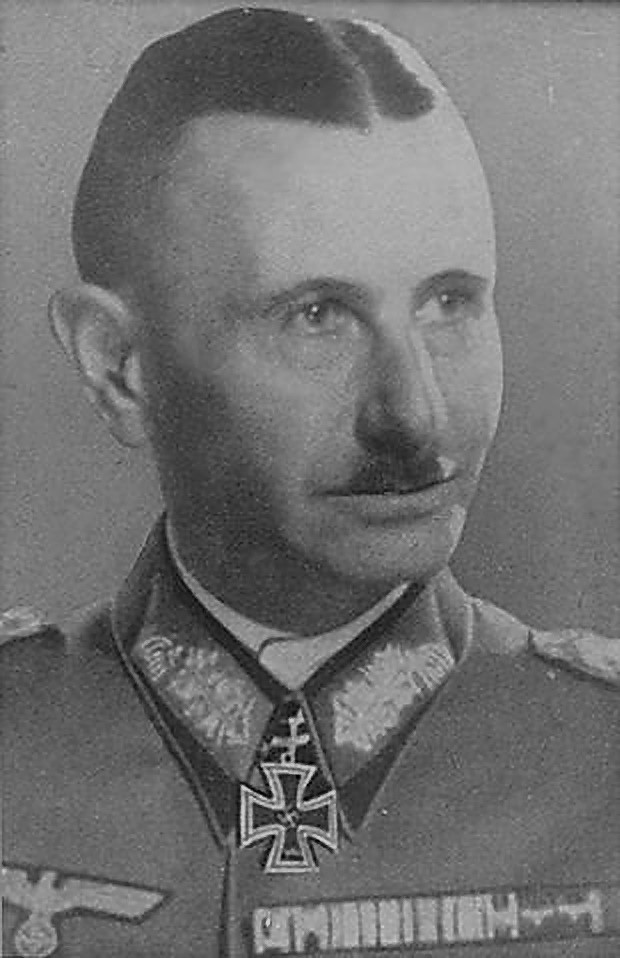
Commander advancing Těšín XVII. Army Corps General Infantry General Werner Kienitz already with the Knight's Cross , which was awarded on August 1, 1941.
In Fryštát, the evacuation of the offices began at 8 am, and at 10 am the road and railway bridges on Olga and Stonávka were blown up, except for the road bridge near the spa in Darkov, which still stands there today. The local people managed to " tease " both Polish engineers in September 1939 and German engineers in May 1945 so as not to destroy the bridge. Then the Polish companies from Karviná and Fryštát retreated inland without a fight. The Wehrmacht did not enter these cities until September 2. Battalion Lt. Col. Iwaszkiewicze in Bohumín received information about the outbreak of war at 5 o'clock in the morning. Shortly afterwards, he set out for Jastrzębia as planned. At that time, the bridges on the Oder were destroyed, which prevented the Germans from immediately taking control of Bohumín.
The Darkov Road Bridge " survived " the first day of the war and the last day of the German occupation. Own photo.
In the Těšín sky
The area of the Těšín region was not in the direction of the Wehrmacht's main strike, so no significant aviation activity took place in its sky. Nevertheless, several air events are mentioned in Polish and German sources or chronicles of municipalities. It is recorded in the Karviná chronicle: “ The first vanguard of the emerging attacker was observation military aircraft. Early in the morning before six o'clock she appeared in larger numbers above Karviná. Planes flew over our city at a slight height and their discovery caused a great stir among the population. It was probably reconnaissance, but able to carry out light bombing Henschle Hs 126 from the " working " for the XVII Army Corps of Army Reconnaissance Squadron3. ( H ) / 14 , which early in the morning attacked the firing positions of the howitzers of the 21st Light Artillery Regiment near Cieszyn. Polish reports state that the anti-aircraft fire of machine guns, which were in the table of each artillery battery, damaged or even shot down one machine. Henschel's observer Oberleutnant Lütjen was indeed damaged by Polish fire to the extent that he had to make an emergency landing in Dětmarovice. The wounded Lütjen was taken by a local doctor to a hospital in Ostrava and pilot Gefreiter Bieber was captured. Some Polish sources attribute the downing to fighter pilot Sergeant Markiewicz from the 122nd Fighter Squadron , which reported the downing of this type of aircraft in the area of Fryštát, but information from the German side clearly attributed the loss to ground fire.
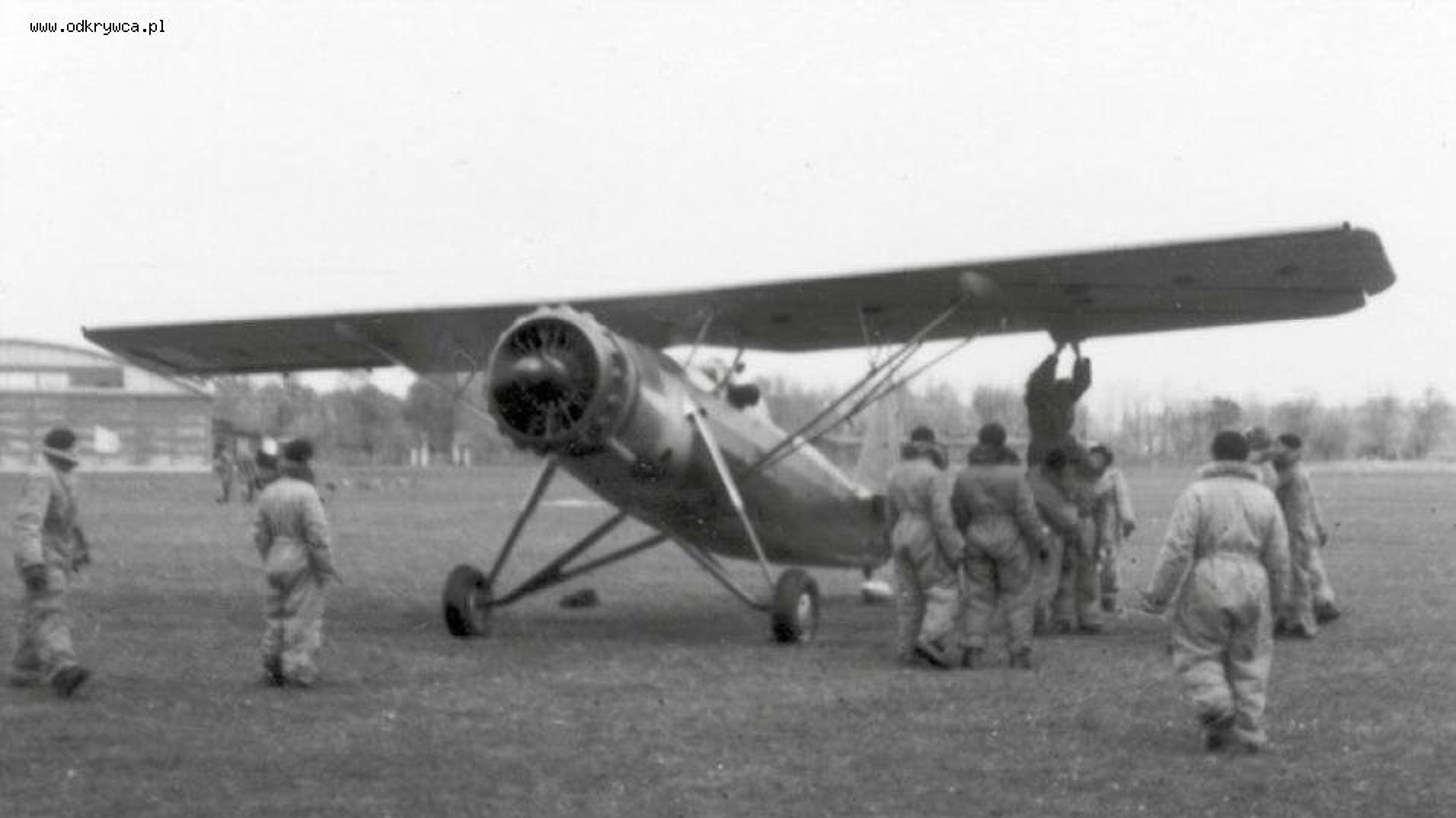
Observation aircraft RWD-14b "Czapla" . Two machines of this type penetrated on September 1, 1939 over Frýdek.
Another kill, this time at Třinec, was reported by Corporal Kremski from the 121st Fighter Squadron . His victim was a reconnaissance Dornier Do 17P from the remote reconnaissance squadron4. ( F ) / 14 , which he shot down around 15.hours, but near the village of Brenna in Poland, just over 15 km east of Trinec.
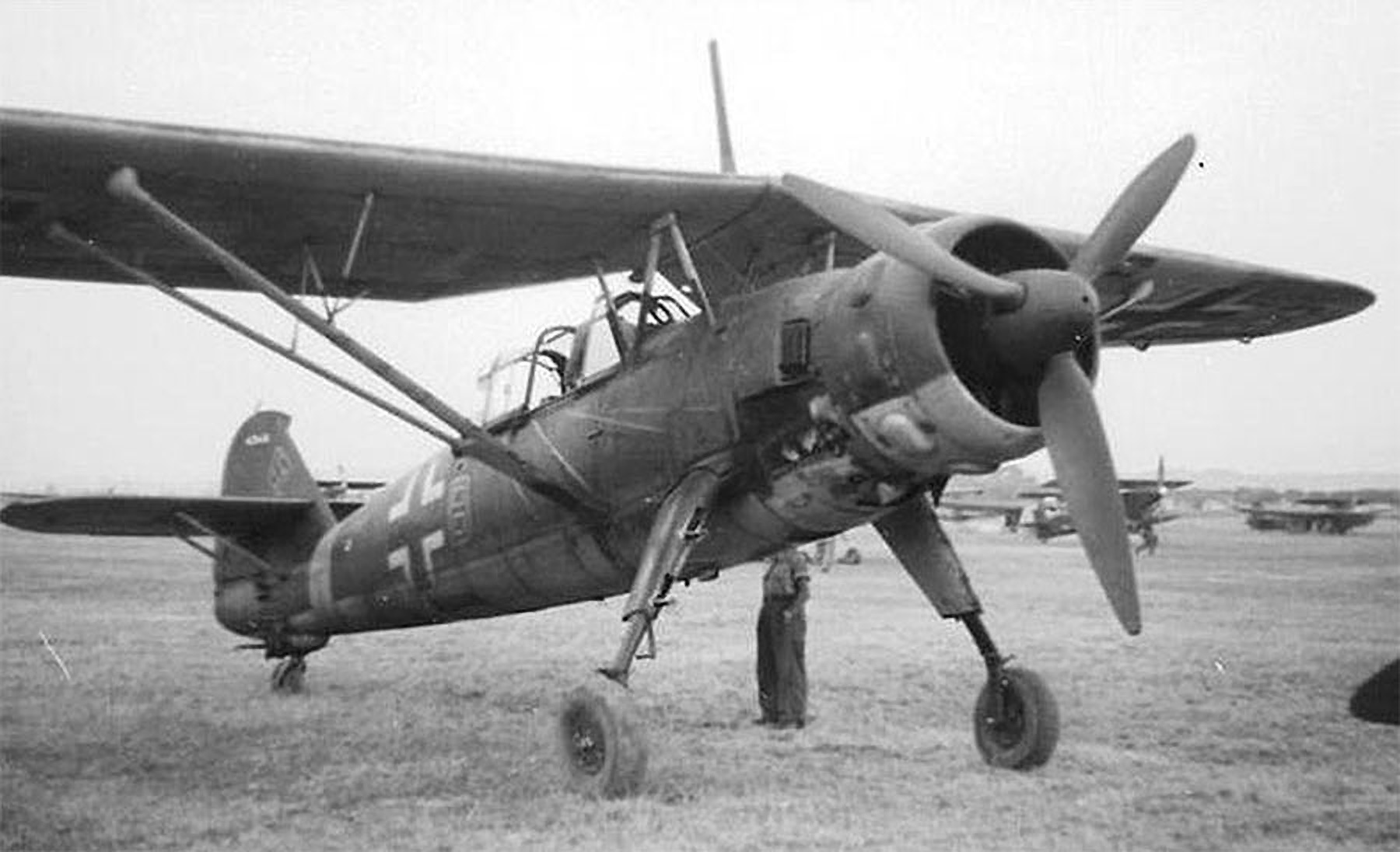
The two-seat reconnaissance Henschely Hs 126 could also conduct bombing operations. On the morning of September 1, several of them attacked the firing positions of Polish howitzers near Těšín.
In the morning, the RWD-14b " Czapla " observation aircraft took off from the Palczowice field airport to survey the movement of German troops along the Frýdek-Těšín axis. Its crew, consisting of Lieutenant Observer Radomir Walczak and Corporal Pilot Adam Bujak from the 23rd Observation Squadron assigned to the Operations Group " Bílsko ", appeared around 10:30 above Frýdek, where anti-aircraft artillery opened fire on it. However, the wounded pilot with the damaged machine was able to return to his base. Just after 12 o'clock, another crew repeated. Thus, in the German war magazine Der Adler - " Unsere Luftwaffe in Polen " on pages 26-27, one artilleryman recalls the second flight: "It was exactly 1 pm when we heard gunfire at an angle from us. Really quite low, about 30 m above the ground, an enemy machine was approaching us. Cannons IV. platoon opened fire. Now we could see the Polish coats of arms on his rudder, and through the binoculars we noticed that grenades were dropped from a Polish plane and machine gun fire was fired. In a moment, it flew into our firing sector. When our first shots fell, it turned around, disappeared behind the church in Frýdek and headed for the border. The first cannon was enough to fire a few more bullets in his direction, which according to the clues must have been accurate. Also fire IV. The platoon on which the Pole threw grenades was well aimed. There was still shooting behind the hill. "The plane, whose crew is not listed in Polish sources, but happily returned to its airport in Palczowice.
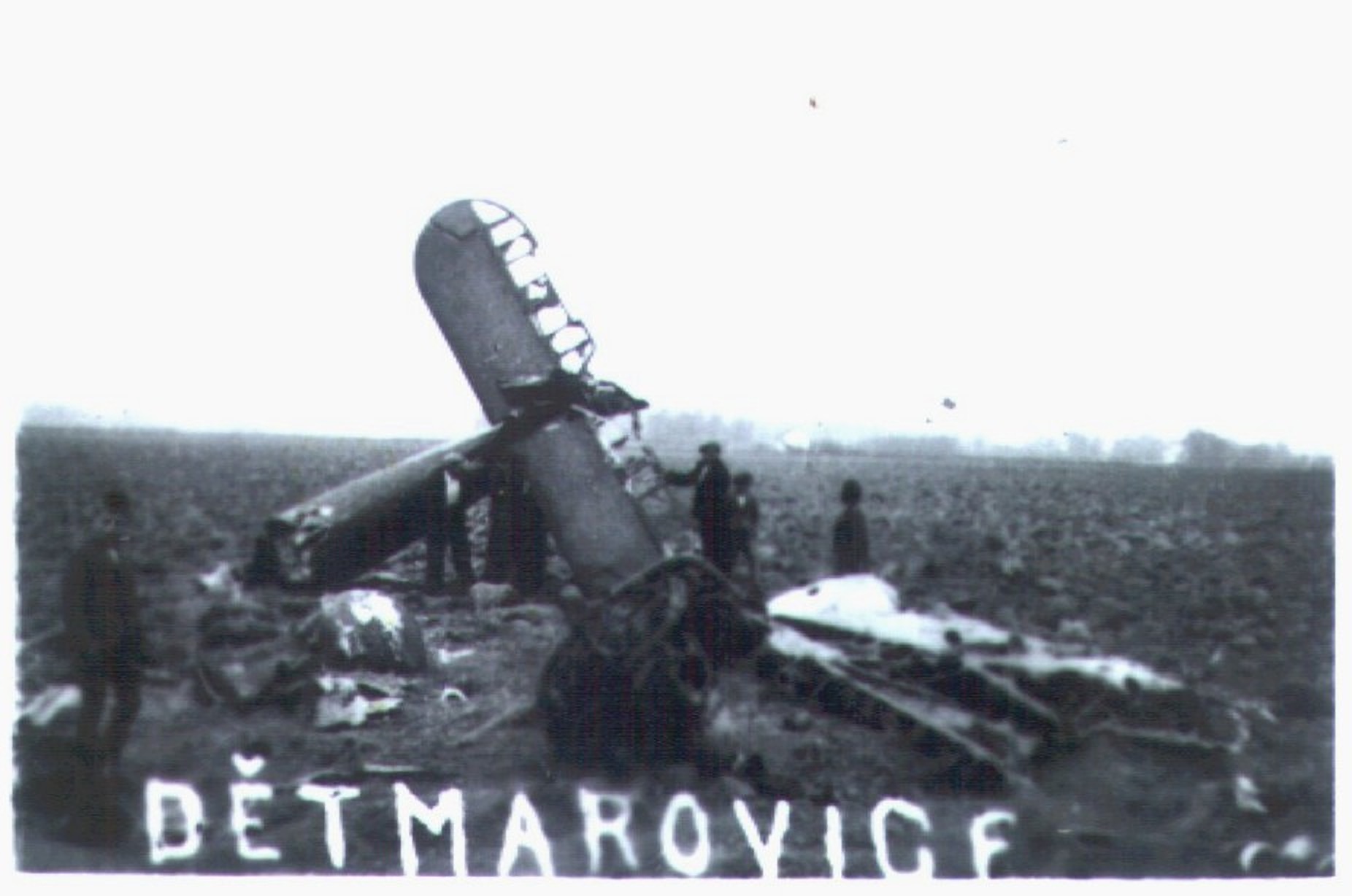
The wreckage of one of them after an emergency landing in Dětmarovice. He was probably damaged (shot down) by anti-aircraft fire machine guns, which were in the arsenal of every artillery battery. The picture was taken on September 1, 1939 before the arrival of the Germans in Dětmarovice.
There are records of both years above Frýdek in the chronicles of the surrounding municipalities. For example, in the chronicle of the Old Town near Frýdek, the chronicler wrote: “ On September 1, around 11 o'clock, artillery sounded. German artillery shelled a Polish plane that flew from Frýdek to Metylovský Čupek. After 12 o'clock and in the evening, the artillery fire on the aircraft was repeated. "In the chronicle of the village of Horní Datyně it is stated:" On September 1, Polish planes appeared several times near our village and at 10 o'clock the plane was shot at Frýdek from anti-aircraft. works. “. The chronicler of the village of Dobrá states: “ In the morning, Polish reconnaissance aircraft appeared over Dobra, against which the anti-aircraft battery located on Skalická hůrka was opened. There was no shot down over Dobra. Citizens watched the shooting curiously, although they could be injured as numerous shards of grenades fell into the village. "
Epilogue
So the Wehrmacht swept through Cieszyn in a matter of hours and advanced into the Polish hinterland. German XVII. the Army Corps ended its combat journey north of Lviv, and the 21st Mountain Infantry Division, after heavy retreat, was virtually destroyed on September 16, when its commander, General Kustroń, fell in battle with the 45th Infantry Division near Ułazów . However, some of their members continued to fight.Many of those who survived and escaped captivity joined the armed resistance in the ranks of the Land Army or other resistance organizations and guerrilla groups.
The first day II. World War II was the beginning of a 68-month period of fascist terror. Local sources state that from September 1939 to May 1945, around 6,000 citizens of the Těšín region died in concentration camps, prisons, executions or war fronts. Among them was my grandfather Alojza Lipka, to whose memory I dedicate this article.
Literature, Sources:
Dziadek, Leopold .: From the "Trzyniec" smelter in Zaolzia to Kowel, Goleszów k. Cieszyna, bd in: SGO Polesie in documents and memories. Zaza Division.
Kaczmarek, Ryszard: Princess Campaigns in Silesian Cieszyn in the XVII Corps of the Army ( 1-3 September 1939 ), in: Reminiscencje września 1939, Bytom 2009
Łydźba, Łukasz: Krakowski III / 2 Myśliwski Division, Poznań 2012
Moś, Wojciech B .: 21. Pułk Artylerii Lekkiej w kampanii sprześniowej 1939, in: Reminiscencje września 1939, Bytom 2009
Moś, Wojciech B .: Strzelcy podhalańscy 1918-1939, Kraków 1989
Przemsza-Zieliński, Jan: Śląski front 1939 - Obrona Śląska i Zagłębia Dąbrowskiego we wrześniu 1939 roku, Sosnowiec 1999
SOkA Frýdek-Místek and Karviná: Chronicles of the villages Dobrá, Dobratice, Fryštát, Horní Datyně, Karviná, Staré Město, Třinec
Zahradnik S.-Ryczkowski M .: Korzenie Zaolzia, Warszawa-Praga-Trzyniec 1992
Photo:
Museum of the 4th Podhalan Rifle Regiment
www.valka.cz
Join us
We believe that there are people with different interests and experiences who could contribute their knowledge and ideas. If you love military history and have experience in historical research, writing articles, editing text, moderating, creating images, graphics or videos, or simply have a desire to contribute to our unique system, you can join us and help us create content that will be interesting and beneficial to other readers.
Find out more